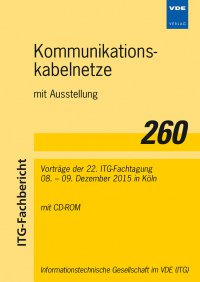High density micro cable family with next generation 200 micron fibers
Conference: Kommunikationskabelnetze mit Ausstellung - 22. ITG-Fachtagung
12/08/2015 - 12/09/2015 at Köln, Deutschland
Proceedings: Kommunikationskabelnetze mit Ausstellung
Pages: 5Language: englishTyp: PDF
Personal VDE Members are entitled to a 10% discount on this title
Authors:
Emmerich, Michael (Corning Optical Communications GmbH & Co. KG, Walther-Nernst Str. 5, 12489 Berlin, Germany)
Olszewski, Sebastian (Corning Optical Communications Polska SP. z o.o Smolice 1e, 95-010 Strykow, Poland)
Toughlian, Jennifer (Corning Optical Communications 310 N. College Rd. Wilmington, North Carolina 28405, USA)
Smith, Kimberly Wilbert (Corning Optical Communications LLC, 1164 23rd St SE, Hickory, North Carolina 28602, USA)
Abstract:
Micro cables usage has increased in the last 10 years because of their high fiber density, small diameter, low weight and high flexibility, thus making them ideally suited for faster installation by air blowing into over-crowded duct pathways which dominate today’s telecom infrastructure, especially in highly populated regions in Europe. Driven by recent FTTH deployments, a similar trend was seen in regions like North America and fast growing countries such as China. Therefore cabling solutions based on micro cables are considered as alternatives to conventional outside plant cables. Strong demand for maximum utilization of existing duct system capacity increases pressure to further increase fiber density in micro cables leading to development of 200 micron fibers that satisfy this need. For example, by using 200 micron fibers a 144f cable can be re-designed to be smaller and be air blown into an 10/8mm (OD/ID) micro duct and 216f cable to fit a 12/10mm micro duct. The 200 micron fiber used in these micro cables com-bines lower attenuation with improved bend performance that is fully compliant with international standards, such as ITU-T G.652D and G.657.A1 recommendation. This fiber also provides greater MFD compatibility with legacy SM fibers (9.2 +/- 0.4 µm).


